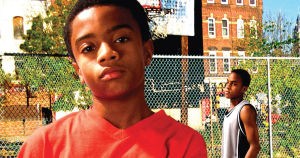
The State of Disability on Book Covers
We take a close look at the state of recognizable representation of visibly disabled characters on book covers.

We take a close look at the state of recognizable representation of visibly disabled characters on book covers.

Pete’s autism is portrayed over and over again as being non-stop pain and suffering. That got incredibly hard to read; do people really think this is what autism is like?

Everything, Everything starts out as a respectful, sensitive narrative with incredibly likable characters, but ends on a shockingly disappointing note in terms of disability representation.

Although Laureth didn’t represent me as a blind person, Sedgwick didn’t feed off tropes and stereotypes; instead, he met with many young blind people and found out about their lives.

Kinda Like Brothers is a pacey, touching look at foster care from an adolescent perspective, featuring an accurate and relatable look at asthma.

The story suggests that Kira’s talents as a threader make up for her disability, justifying her continued survival–with the disturbing implication that without it, she would be worthless.
Diversity in children’s literature is often represented as an either/or, without intersectionality; characters can either be autistic or gay, for example, or a wheelchair user or Black, but rarely both. Why is that?

April Henry’s main character in Girl, Stolen is a well-researched, well-written example of blindness, and we were thrilled to discuss the book with her.

The description for this book uses the phrase “brilliant but autistic” to describe its main character, and that’s where our conflicted feelings about Viral Nation start.

Kayla Whaley talks with thirteen-year-old activist and author Melissa Shang about her recent middle grade debut.